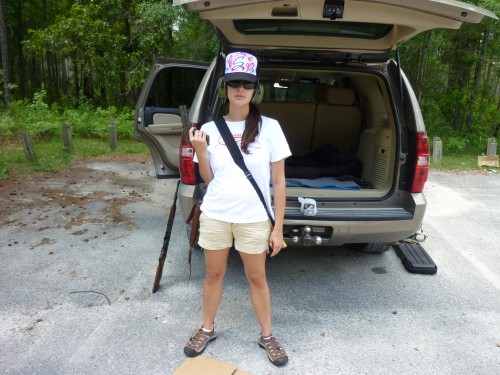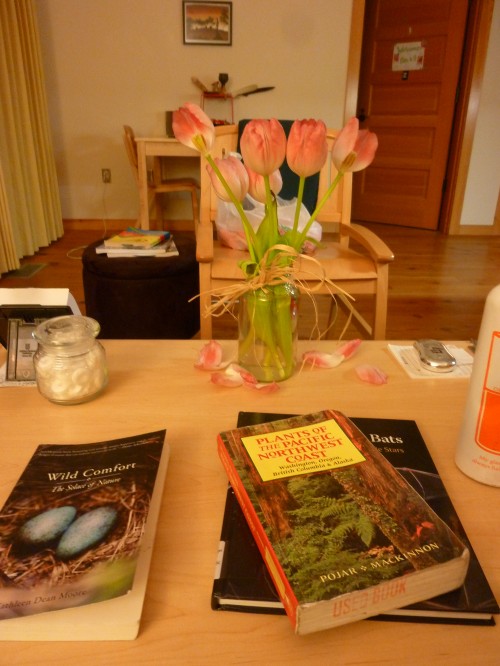Confessions of a Bibliophile

It has been almost two years now since I graduated with my Masters in Education from Western Washington University (WWU) and North Cascades Institute’s unique graduate program. My memories are filled with the laughter of Mountain School students, Professor John Miles’ New “Hampsha” accent and endless views of Diablo Lake. While I miss the sunshine, quiet and darkness up there in the mountains, there are days where I also long for the library, research and studying. It may be shocking to some, but it’s true: we did actually do traditional learning and coursework during the residency. With images of the graduate students gallivanting around snowy peaks, dense forests and playing in the sunshine, it is easy for parents and friends to wonder if we were actually trying to “learn anything” in the program. Of course, it’s a very big “yes”.
We were all there to learn. Sure, Dr. Miles did an excellent job of getting us out into the world we preach about, but there were also the necessary times of studying inside. You can’t read heaps of homework out in the rain, at least not everyday. Deer Creek Shelter, for example, is a wonderful place for respite, but I doubt a LAN cord to connect to the servers will reach that far (though I’ve no doubt Nick Mikula, one of my fellow graduates, tried it at least once). Large portions of curriculum writing, nonprofit work and research for various projects all happen in front of the screen or book, but one of the best parts was the individuality of all this learning.
The amount and types of research varied from student to student. Taken out of context, some of the reading we do as experiential environmental educators could come across as crazy. For me, I’m pretty sure the WWU library has me flagged, and with the recent National Security Agency and “Big Brother” news going on, I wouldn’t blame them. I’m into some pretty amazing stuff.
My reading list started in the summer of 2010 with books about gun rights. For our first presentation we were able to pick a current event topic that interested us, and I chose the rider attached to the Credit Card Holder’s Bill of Rights. This rider made it legal for a citizen of the United States to carry a loaded weapon within National Park and Wildlife Refuge areas so long as they abide by the laws of the state in which the park is located. It is still illegal to fire the weapon, but it no longer needs to be dismantled and stored in the trunk. Coming fresh from South Carolina, this was fascinating to me because I think hunters and other naturalists who don’t fit into the stereotypical “tree hugger” category need to be taken seriously. Wanting to carry a gun used for hunting or personal protection does not mean a person cares less about the environment than one who eats vegan and likes to slack line. It may be more about the mental comfort of the holder to carry a gun within the parks, but I argued that person is coming to enjoy nature as well, and shouldn’t be made to feel inferior by other conservationists. Putting political and cultural differences aside, a love for nature and the understanding of the importance of stewardship is the ultimate common ground, locked and loaded or not.
 The author getting ready to go practice at a gun range in South Carolina, just for fun. Librarians should not be alerted! Photo by Peyton Munafo.
The author getting ready to go practice at a gun range in South Carolina, just for fun. Librarians should not be alerted! Photo by Peyton Munafo.
I’m sure you, dear reader, can imagine the look on some of my peers’ faces when I presented. “Whoa! Crazy Southerner alert!” which is exactly why I chose the topic.
Fast-forward to our capstones in 2012, which was our final class and culminating project. My book list now took on a new shape. There were articles, websites and books regarding death, decomposition and soil formation. One book was about the different ways epitaphs have changed over the years. Another detailed the biological processes that happen to flesh upon death. Yet another examined the flora and fauna of the soil and what they like to eat. Taken out of context, I’m sure the librarians thought I’d murdered someone and was trying to cover my tracks. Not so! It’s all just in a day’s work of an environmental educator.
You know what? I enjoyed every minute of it. The endless hours of reading were my favorite. Yes, I said it. I love reading and writing. No one can succeed fully in a graduate program without at least some form of enjoyment in these complementary tasks. Volumes of books, papers, articles, bibliographies and more all contribute to a rich, diverse graduate experience. Of course the more actively “fun” parts involved going outside and exploring. But sometimes, in the quiet of the work room, it felt just as fun.
 The plant guide/bible of graduate studies, Pojar and MacKinnon’s Plants of the Pacific Northwest Coast, as pictured in the lovely graduate apartments at the Environmental Learning Center. Photo by author.
The plant guide/bible of graduate studies, Pojar and MacKinnon’s Plants of the Pacific Northwest Coast, as pictured in the lovely graduate apartments at the Environmental Learning Center. Photo by author.
Leading photo: A sampling of books, and bones, from Burgart’s shelf. Photo by author.
Stephanie Burgart is an active reader and traveler. She and her husband currently live in Seattle with their two cats and 23 year old turtle.

